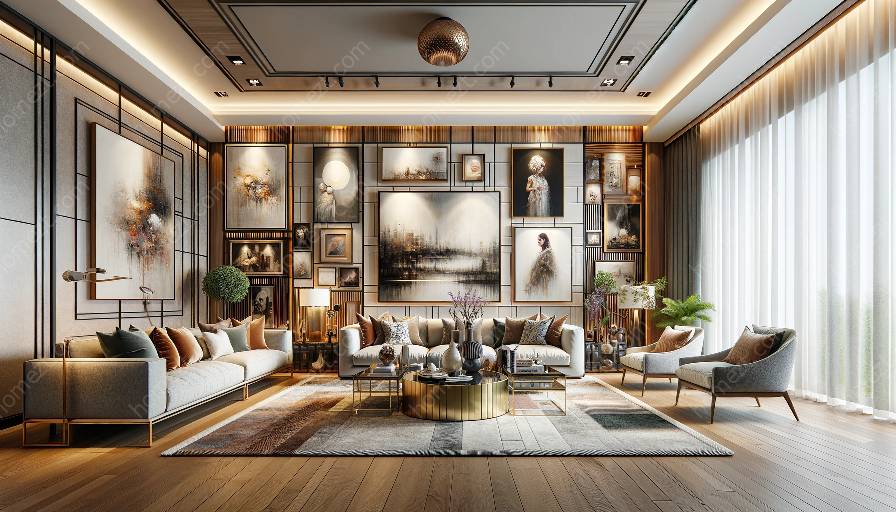Color has a profound impact on human psychology and can significantly influence our emotions, perceptions, and behaviors. When it comes to interior design, the careful selection and application of colors can create specific moods, enhance spatial perception, and evoke desired responses from occupants. Understanding the psychological effects of colors is crucial for creating harmonious and impactful interior spaces.
The Influence of Colors in Interior Design
Colors can be categorized into warm and cool tones, each with its own set of psychological effects. Warm colors, such as red, orange, and yellow, are associated with energy, warmth, and stimulation. They can create a sense of coziness and intimacy in interior spaces, making them ideal for social areas like living rooms and dining rooms. Cool colors, like blue, green, and purple, evoke feelings of calmness, serenity, and relaxation. They are often used in bedrooms, bathrooms, and other areas of the home where a tranquil atmosphere is desired.
Furthermore, individual colors have distinct psychological associations. For example, red is linked to passion, excitement, and urgency, while blue is associated with tranquility, trust, and stability. Understanding the unique psychological effects of each color is essential for achieving the desired ambiance in interior design.
Applying Psychological Effects of Colors in Interior Design
When decorating with art, it's important to consider how the chosen artworks interact with the overall color scheme of the room. Artwork can serve as a focal point and influence the perceived mood of the space. For example, vibrant, energetic paintings can complement a room adorned with warm tones, reinforcing the sense of liveliness and fervor. On the other hand, serene and calming artworks can enhance the tranquil atmosphere of a room decorated with cool colors.
In general interior decorating, the selected color palette should align with the intended purpose of each room. For instance, a home office can benefit from a predominantly blue color scheme to promote focus and concentration, while a kitchen may thrive with lively red accents to stimulate appetite and conversation. Aside from the individual color choices, the combination and contrast of colors play a significant role in creating visual interest and emotional impact within a space.
Color Harmony and Balance
Harmonizing different colors within a space is crucial for achieving a visually appealing and psychologically impactful interior design. Color theory principles, such as complementary, analogous, and monochromatic color schemes, provide valuable guidelines for creating balanced and harmonious environments. Complementary color pairings, like blue and orange or red and green, create dynamic contrast, while analogous color schemes, such as varying shades of green and blue, offer a sense of coherence and flow.
Balance between warm and cool tones, as well as light and dark shades, contributes to the overall visual and psychological equilibrium within a room. Introducing neutral colors, such as white, gray, or beige, can serve as a unifying element, preventing overwhelming color dominance and aiding in the integration of diverse decorative elements.
Accessories and Accents
When considering the psychological effects of colors in interior design, accessories and accents should not be overlooked. By strategically incorporating decorative elements like throw pillows, rugs, and curtains in specific colors, one can enhance or moderate the perceived ambiance of a room. Bright accent colors can inject energy and vibrancy into a neutral space, while subtle accents in soothing tones can temper the overall visual intensity and instill a sense of tranquility.
Adjusting the color and intensity of lighting fixtures also plays a pivotal role in shaping the psychological impact of interior spaces. Warm, dim lighting can evoke a cozy and intimate atmosphere, while bright, cool lighting contributes to a more invigorating and expansive feeling.
Conclusion
Understanding the psychological effects of colors in interior design is instrumental in creating environments that cater to the emotional and functional needs of occupants. By leveraging the nuanced impact of colors, interior designers and homeowners alike can transform spaces into havens of tranquility, productivity, or social warmth. Whether decorating with art or undertaking general interior decorating projects, a thoughtful consideration of color psychology can elevate the overall aesthetic and emotional resonance of a space.






































